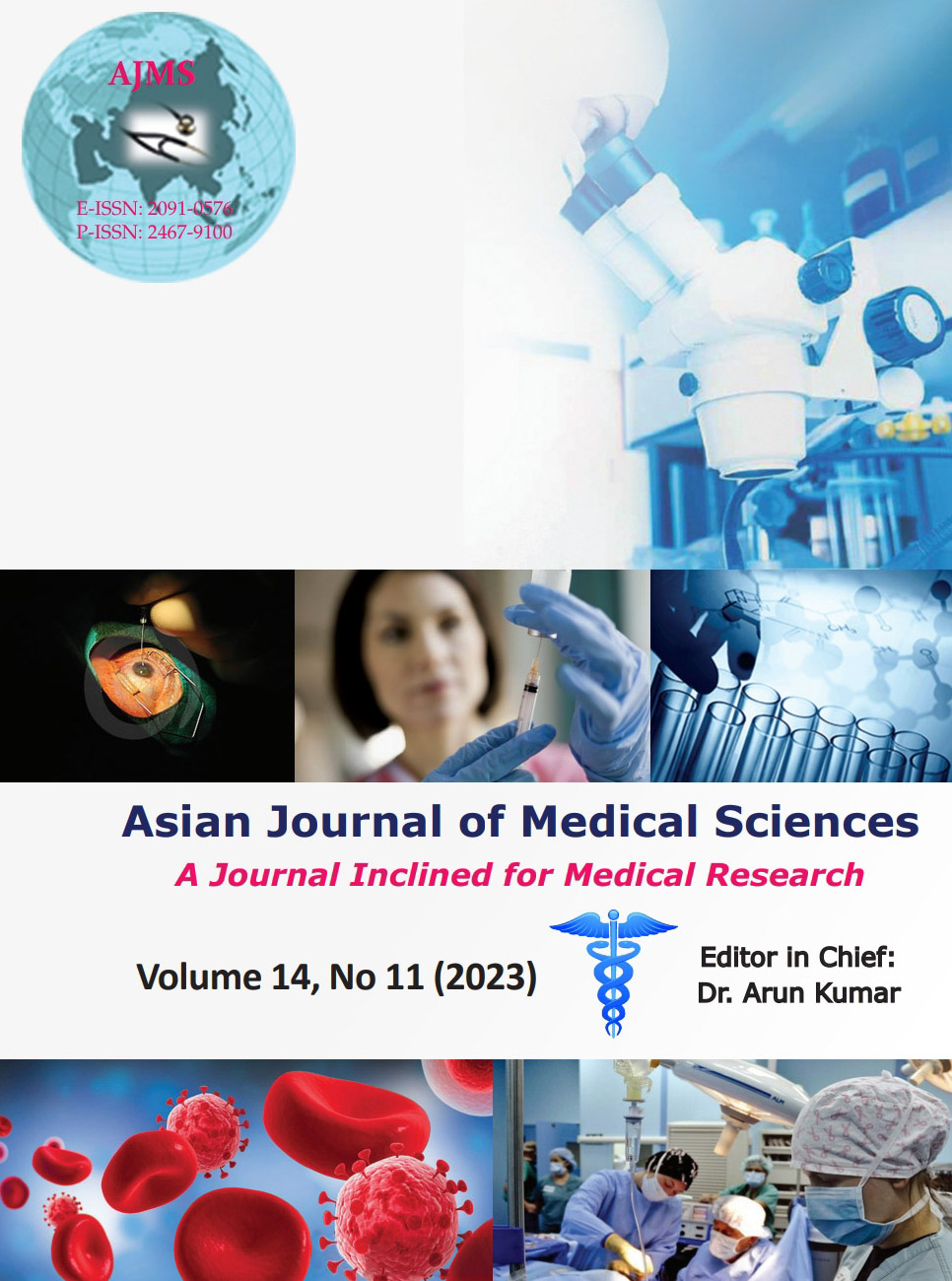Diagnostic evaluation of leukocyte esterase reagent strip in bedside rapid diagnosis of spontaneous bacterial peritonitis in cirrhotic patients
Keywords:
Ascites; Peritonitis; Liver cirrhosis; Neutrophils; Esterases; Leukocyte esteraseAbstract
Background: Spontaneous bacterial peritonitis (SBP) is the most common and serious infection of liver cirrhosis patients with ascites. If not intervened with early antibiotic treatment leads to high morbidity and mortality. Thus, early diagnosis and treatment of SBP are needed for survival. Leukocyte esterase reagent can aid in early diagnosis.
Aims and Objectives: This study aimed to assess the diagnostic accuracy of the leukocyte esterase dipstick test for the diagnosis of SBP in resource poor settings.
Materials and Methods: This cross-sectional study was conducted during August 2018–January 2019 on patients with cirrhotic liver disease and ascites in a tertiary care medical college hospital, Puducherry. All patients underwent abdominal paracentesis, and ascitic fluid was subjected to cell counts, biochemistry tests, culture, and leukocyte esterase test (Multistrix SG8- Seimens) at 120 s and graded with five levels. Grade 3 was positive (125 polymorphonuclear leukocytes [PMNL]/mL) and grade 4 (<500/mL), which exceeds the threshold for SBP (<250 PMNL/mL). Sensitivity, specificity, positive, and negative predictive value (PPV and NPV) was calculated.
Results: A total of 50 ascitic fluids were analyzed. Nine out of 50 (18%), 16 (32%), and 4 (8%) were positive for cell count method, Leucocyte esterase reagent (LER) test and culture, respectively. The sensitivity, specificity, PPV, NPV, and diagnostic accuracy for LER test were 6.25%, 91.18%, 25%, 67.39%, and 64%, respectively.
Conclusion: The LER strip test is useful for SBP diagnosis in an emergency and resource poor setting. It provides good diagnostic accuracy and high NPV and it is cost effective and better bedside tool for SBP diagnosis.
Downloads
Downloads
Published
How to Cite
Issue
Section
License
Copyright (c) 2023 Asian Journal of Medical Sciences

This work is licensed under a Creative Commons Attribution-NonCommercial 4.0 International License.
Authors who publish with this journal agree to the following terms:
- The journal holds copyright and publishes the work under a Creative Commons CC-BY-NC license that permits use, distribution and reprduction in any medium, provided the original work is properly cited and is not used for commercial purposes. The journal should be recognised as the original publisher of this work.
- Authors are able to enter into separate, additional contractual arrangements for the non-exclusive distribution of the journal's published version of the work (e.g., post it to an institutional repository or publish it in a book), with an acknowledgement of its initial publication in this journal.
- Authors are permitted and encouraged to post their work online (e.g., in institutional repositories or on their website) prior to and during the submission process, as it can lead to productive exchanges, as well as earlier and greater citation of published work (See The Effect of Open Access).




